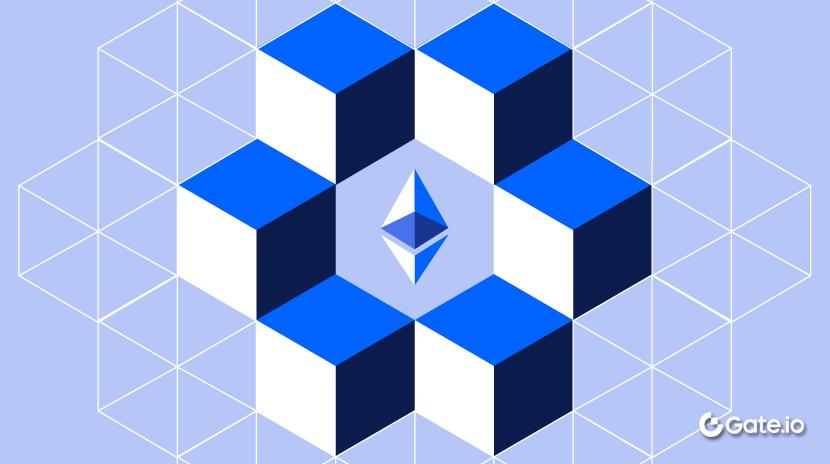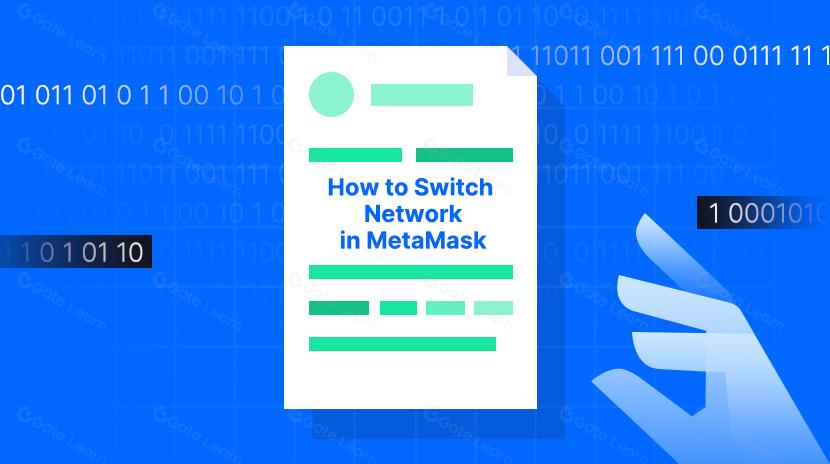¿De "Rey de las Altcoins" a "Patio Institucional"? ¿Puede la Actualización de Pectra Reshape el Ecosistema de Ethereum?
1. Antecedentes del Hard Fork de Pectra

Fuente de la imagen: Coinpedia
La actualización de Ethereum Pectra se puso en marcha el 5 de marzo, combinando las actualizaciones de Praga y Electra para mejorar tanto la capa de ejecución como la capa de consenso de Ethereum. La bifurcación dura de Pectra marca un hito importante en la evolución de Ethereum, con el objetivo de mejorar el staking de ETH, impulsar la escalabilidad de la Capa 2 (L2) y expandir la capacidad de la red mediante la introducción de 11 Propuestas de Mejora de Ethereum (EIPs). El proceso de actualización se implementó por primera vez en la red de prueba Holesky el 24 de febrero de 2024, y está programado para desplegarse en la red principal de Ethereum el 8 de abril de 2024, sujeto a la finalización exitosa de las actualizaciones tanto en las redes de prueba Holesky como Sepolia.
Tras la actualización de Dencun en marzo de 2024, se espera que Pectra integre múltiples Propuestas de Mejora de Ethereum para abordar los desafíos de escalabilidad, seguridad y experiencia de usuario, según ethereum.org (ver referencia 1). La actualización se divide en dos fases:
Fase 1: Mediados de marzo de 2025
- Duplicación de la capacidad de L2 Blob: amplía la capacidad de blob por bloque de 3 a 6, reduciendo la congestión y disminuyendo las tarifas.
- Abstracción de cuenta: Permite a los usuarios pagar las tarifas de gas con stablecoins como USDC y DAI, mejorando la flexibilidad de pago.
- Aumento del límite de participación del validador: aumenta el límite de participación de 32 ETH a 2.048 ETH, lo que permite operaciones de participación a gran escala.
Fase 2: Finales de 2025 — Principios de 2026
- Implementación de árboles Verkle: Reemplaza los árboles Merkle-Patricia con una estructura de datos más eficiente, mejorando el almacenamiento y la sincronización de datos.
- Muestreo de Disponibilidad de Datos entre Pares (PeerDAS): Permite a los nodos validar los datos de transacciones sin almacenarlos todos, mejorando la escalabilidad.
2. Propuestas clave de Mejora de Ethereum (EIP) en la Actualización Pectra

Fuente de la imagen: Datawallet
La actualización Pectra incluye 11 Propuestas de Mejora de Ethereum (EIP), diseñadas para mejorar la escalabilidad, la seguridad, la abstracción de cuentas y los mecanismos de validación de staking. A continuación se destacan las propuestas clave en función de su impacto potencial en el desarrollo de Ethereum (sujeto a perspectivas de investigación individuales):
1. EIP-7702: Abstracción de cuenta
- Visión general: Permite que las cuentas de propiedad externa (EOAs) ejecuten algunas funcionalidades de contratos inteligentes, lo que permite transacciones por lotes y patrocinio de tarifas de gas.
- Opinión: Esto mejorará significativamente las carteras de abstracción de cuentas, permitiéndoles funcionar como contratos inteligentes, manejando transacciones por lotes y habilitando pagos de gas de terceros. (El EIP-7840 relacionado amplía aún más las funcionalidades de la cuenta, permitiendo comportamientos de cuenta personalizables).
2. EIP-7251: Aumento de la Validación del Validador
- Visión general: Aumenta la apuesta máxima del validador de 32 ETH a 2,048 ETH, simplificando la gestión del validador y permitiendo nodos de participación a mayor escala.
- Opinión: Si bien esto aumenta la centralización del staking de Ethereum, también eleva la barrera de entrada para los validadores, lo que hace que el proceso de staking sea más adecuado para instituciones que para participantes minoristas.
3. EIP-7002: Mejoras en Retiros
- Visión general: Permite a las direcciones de la capa de ejecución activar retiros, reduciendo la dependencia de la capa de consenso y simplificando el proceso de retiro.
- Opinión: Hace que los retiros sean más directos y eficientes, eliminando pasos innecesarios en el proceso de retiro del staking.
4. EIP-6110: Optimización del Retraso de Activación del Validador
- Visión general: Reduce el retraso de activación del validador de aproximadamente 9 horas a aproximadamente 13 minutos, mejorando significativamente la eficiencia de participación en la red.
- Opinión: La incorporación más rápida de validadores mejora la eficiencia de recursos de Ethereum y reduce la congestión de la red, lo que disminuye los costos operativos.
5. EIP-7691: Expansión del tamaño del bloque
- Visión general: Aumenta el tamaño del bloque en un 50%, lo que permite que la red procese más transacciones y mejore la escalabilidad general.
- Opinión: Reducir la congestión y mejorar la velocidad de las transacciones ayudará a Ethereum a manejar un tráfico más alto, especialmente durante el uso pico. (EIP-7742 relacionado ajusta dinámicamente la capacidad del blob por bloque para optimizar aún más la escalabilidad de L2).
6. EIP-7516: Mejorando la transparencia de MEV
- Visión general: Proporciona una mayor visibilidad en el Valor Extraíble Máximo (MEV), ayudando a los usuarios y desarrolladores a comprender y monitorear mejor las actividades de MEV.
- Opinión: Si bien aumentar la transparencia reduce las oportunidades de arbitraje, mejora la equidad en las transacciones de Ethereum.
7. EIP-7549: Ajuste de tarifas de gas
- Visión general: Optimiza la estructura de tarifas de gas para reducir la congestión y estabilizar los costos de transacción.
- Opinión: Ayuda a mitigar los picos en las tarifas de gas durante la congestión de la red, haciendo que las tarifas sean más predecibles. (EIP-6046 también ajusta las tarifas de gas, pero EIP-7549 introduce un mecanismo de precios más dinámico y flexible).
8. EIP-7685: Optimización del Mecanismo de Gobernanza
- Visión general: Mejora la estructura de gobierno de Ethereum, haciéndola más descentralizada, transparente y eficiente.
- Opinión: Podría acelerar la aprobación de propuestas y mejorar la toma de decisiones impulsada por la comunidad.
9. EIP-7021: Mejora del Mecanismo de Penalización del Validador
- Resumen: Ajusta los mecanismos de penalización para alinear mejor los incentivos de los validadores con la seguridad de la red y minimizar el comportamiento malicioso.
- Opinión: Sirve como contrapeso al aumento del límite de participación de validadores (EIP-7251), garantizando un juego limpio entre los validadores.
10. EIP-7683: Optimización del rendimiento de contratos inteligentes
- Visión general: Mejora la eficiencia de gas para la ejecución de contratos inteligentes, reduciendo los costos de ejecución y aumentando la eficiencia en cadena.
- Opinión: Esto beneficiará a las aplicaciones DeFi, reduciendo costos y mejorando la velocidad de las transacciones, potencialmente optimizando los mecanismos de trading de Uniswap.
11. EIP-6123: Mejora de la compatibilidad entre cadenas
- Visión general: Mejora la interoperabilidad de Ethereum con otras blockchains, promoviendo operaciones sin problemas entre cadenas.
- Opinión: Fortalece el papel de Ethereum como un centro multi-cadena, haciendo que las transferencias de activos y las interacciones entre cadenas sean más fluidas.
3. Actualización de Doble Capa de Pectra

Fuente de la imagen: Cryptoticker
Pectra adopta un enfoque de actualización de doble capa, fusionando la capa de ejecución (Praga) y la capa de consenso (Electra) para resolver problemas de sincronización que podrían surgir de actualizaciones separadas. Históricamente, las capas de ejecución y consenso de Ethereum se han actualizado de forma independiente debido a sus funciones distintas:
- Capa de Ejecución (Praga): Responsable de procesar transacciones de usuarios, ejecutar contratos inteligentes y gestionar cambios de estado. Esta es la capa donde los usuarios interactúan directamente con Ethereum, y sirve como la infraestructura principal para aplicaciones descentralizadas (DApps) y contratos inteligentes.
- Capa de Consenso (Electra): Opera bajo el mecanismo de Prueba de Participación (PoS), gestionando validadores, garantizando la producción de bloques y manteniendo la seguridad de la red. Esta capa asegura la consistencia e integridad de la cadena de bloques, con los validadores apostando activos para alinear sus intereses con la seguridad de la red.
EIPs notables que requieren modificaciones en la capa
Varios EIP en la actualización Pectra requieren modificaciones en las capas de ejecución o consenso:
EIPs que modifican la capa de consenso:
- EIP-6110, EIP-7002, EIP-7251, EIP-7549, EIP-7685, EIP-7691
EIPs que modifican la capa de ejecución:
- EIP-2537, EIP-2935, EIP-6110, EIP-7002, EIP-7623, EIP-7685, EIP-7702, EIP-7840
Claves EIP adicionales en Pectra
EIP-7623: Mejora del Mecanismo de Mensajería entre Cadenas
- Visión general: Mejora el procesamiento de mensajes entre cadenas, mejorando la eficiencia y la seguridad de la comunicación entre cadenas.
- Importancia: Si bien Pectra se centra principalmente en la ejecución interna y las capas de consenso de Ethereum, el EIP-7623 está diseñado para optimizar la interoperabilidad con blockchains externos, especialmente en transferencias de activos entre cadenas y transmisión de datos.
EIP-2537: Operaciones de Curva BLS12-381
- Resumen: Introduce soporte para la curva criptográfica BLS12–381, crucial para las pruebas de conocimiento cero (ZKPs) y el cifrado.
- Importancia: A diferencia del enfoque más amplio de Pectra en el procesamiento de transacciones, la optimización de las comisiones de gas y los mecanismos de validación, la EIP-2537 mejora específicamente las capacidades criptográficas, especialmente en aplicaciones centradas en la privacidad y la verificación de pruebas.
EIP-2935: Mecanismo de Recuperación del Validador
- Visión general: Proporciona un mecanismo más flexible para que los validadores puedan recuperar su estado después de perder su rol de validador.
- Importancia: EIP-2935 garantiza que los validadores puedan reintegrarse en el proceso de consenso bajo ciertas condiciones. En contraste, EIP-7251 y EIP-7021 de Pectra se centran en ajustes de límite de participación y mecanismos de penalización, refinando los incentivos de los validadores y las medidas de seguridad.
4. El Impacto de Pectra en Ethereum y el Mercado de Criptomonedas

Fuente de la imagen: Voice of Crypto
DApps
El hard fork de Pectra introduce funcionalidades de contratos inteligentes en monederos regulares, simplificando el proceso de desarrollo y expandiendo las posibles aplicaciones. Funciones como la recuperación social y las transacciones por lotes facilitan la creación de DApps amigables para el usuario, mejorando la fiabilidad y eficiencia de las aplicaciones descentralizadas en DeFi, GameFi y otros sectores.
Sin embargo, Ethereum enfrenta un creciente desafío con los efectos "parasitarios" de la Capa 2 (L2). Las cadenas L2 han absorbido una parte significativa de la actividad DeFi, lo que ha llevado a una disminución de las tarifas de transacción de la red principal y a un aumento en la tasa de inflación de ETH. Si bien las L2 forman parte del ecosistema de Ethereum, sus secuenciadores centralizados y sus modelos económicos independientes generan preocupaciones sobre la proposición de valor a largo plazo de Ethereum.
Valor a largo plazo de Ethereum
Muchos poseedores de Ethereum han expresado frustración por el rendimiento del precio del ETH en este ciclo, con algunos mirando a Pectra como un posible cambio de juego, especialmente en mejoras de participación y escalabilidad L2. La actualización introduce varias mejoras clave:
- Operaciones de monedero más flexibles, que permiten transacciones por lotes y tarifas de gas patrocinadas
- Límites de validación de staking más altos, lo que permite retiros más rápidos e integración de validadores
- Mayor capacidad de bloque, lo que lleva a un procesamiento de transacciones más rápido y tarifas de gas más estables
El umbral de participación más alto mejora la transparencia del MEV, aumenta los costos del MEV y mejora la transparencia y eficiencia de la gobernanza de la red. La ejecución de contratos inteligentes se vuelve más barata, se mejora la compatibilidad entre cadenas y el procesamiento de transacciones se vuelve más rentable.
Sin embargo, el problema de fragmentación de Ethereum sigue sin resolverse. El ecosistema se enfrenta a una pregunta fundamental: ¿Debería Ethereum apuntar a un modelo de cadena única de alta capacidad, o seguir confiando en la agregación fragmentada de L2? Este dilema podría convertirse en una restricción a largo plazo en el desarrollo de Ethereum.
El Factor Solana
El aumento de precio de Solana está impulsado principalmente por una alta capacidad de procesamiento, bajos costos de transacción y un sólido respaldo de capital de los EE. UU. A diferencia de la liquidez fragmentada de Ethereum en L2s, el modelo de liquidez monolítico de Solana mantiene los activos unificados dentro de una sola red. Ethereum ha abordado con éxito la escalabilidad a través de soluciones L2 pero a costa de la fragmentación e replicación de la innovación, lo que hace que el modelo de cadena monolítica sea cada vez más atractivo.
Desde una perspectiva de mercado, la mayor ventaja de Ethereum sigue siendo su dominio en finanzas descentralizadas (DeFi) — el impulsor de valor principal del ecosistema de Ethereum.
Un compromiso sobre la descentralización
La mayor ventaja de la actualización Pectra es su seguridad y escalabilidad mejoradas, pero EIP-7251 introduce una espada de doble filo:
- Ventajas: Consolida los números de validadores, reduciendo la carga en almacenamiento a gran escala y disminuyendo los gastos operativos de la red.
- Contras: Aumenta la centralización, haciendo que Ethereum sea más favorable para grandes inversores e instituciones, potencialmente alienando a los participantes minoristas.
La pregunta estratégica ahora es si Ethereum puede aprovechar el límite de participación de 2.048 ETH para atraer capital institucional, similar al atractivo de Solana y Sui para los inversores estadounidenses. ¿Puede el precio de Ethereum aumentar al abrazar el dinero institucional a costa de la descentralización?
Ethereum ahora se enfrenta a una nueva versión de la “trinidad imposible”:
- Fortaleza narrativa
- Control de precios centralizado
- Staking descentralizado de PoS
Encontrar el equilibrio adecuado entre estos elementos será el mayor desafío de Ethereum en el futuro.
¿Dónde está la Estrella del Norte de Ethereum?
Ethereum parece estar perdiendo su dirección. El suministro fragmentado de ETH se está inflando gradualmente, y la actividad de DeFi se ha desplazado a cadenas L2, lo que ha provocado una fuerte disminución en la captura de tarifas en la red principal. En realidad, las cadenas L2 funcionan como blockchains independientes, con secuenciadores centralizados que operan efectivamente como ecosistemas separados.
- Los flujos de ingresos de Base van a Coinbase
- Los beneficios de Arbitrum fluyen hacia Arbitrum DAO
- La red principal de Ethereum no logra capturar este valor
Mientras tanto, otras blockchains tienen narrativas claras:
- Bitcoin = Oro Digital
- Solana = On-Chain Nasdaq
- Adopción de IA = La próxima frontera
Las narrativas de DeFAI y AI Agent de Solana han impulsado las ganancias de la proporción SOL/ETH, cumpliendo su visión como el competidor más fuerte de Ethereum. Metis se ha reposicionado como una cadena de bloques centrada en la IA, compitiendo con DeFAI por el ecosistema impulsado por la intención.
Entonces, ¿cuál es la estrella del norte de Ethereum?
Las solicitudes de ETF de Ethereum siguen teniendo dificultades, principalmente debido a dos problemas clave:
1. Falta de Rendimiento de Staking
- A diferencia de los ETF de BTC, los ETF de Ethereum no ofrecen recompensas de staking.
- Mantener ETH a través de un ETF pierde aproximadamente el 3.5% de recompensas de participación anual (APY).
- Los inversores también incurren en tarifas de gestión y no pueden acceder a oportunidades de rendimiento DeFi.
2. Falta de Alineación Institucional
- La fuerte descentralización de Ethereum dificulta que Wall Street lo domine.
- A diferencia de Bitcoin, el valor central de Ethereum no ha sido completamente capturado por las finanzas tradicionales.
- Los actores institucionales principalmente interactúan con Ethereum a través de stablecoins y DeFi, no directamente con la exposición a ETH.
Sin embargo, el límite de stake de 2,048 ETH de Pectra señala un posible cambio. Al permitir stakes institucionales más grandes, Ethereum puede alinearse con el capital institucional a través de la integración de RWA, lo que potencialmente hace que los ETFs de stake de Ethereum sean tan estratégicamente importantes como la adopción de reservas de Bitcoin.
El punto de referencia a corto plazo de Ethereum podría ser los ETF basados en staking, elevando la narrativa de precio de ETH al nivel del estatus de reserva estratégica de Bitcoin.
Descargo de responsabilidad:
- Este artículo es reimpreso de [YBB Capital]. Todos los derechos de autor pertenecen al autor original [Ac-Core]. Si hay objeciones a esta reimpresión, por favor contacte al Gate Learnequipo, y lo manejarán rápidamente.
- Descargo de responsabilidad: Las opiniones expresadas en este artículo son únicamente las del autor y no constituyen ningún consejo de inversión.
- El equipo de Gate Learn realiza traducciones del artículo a otros idiomas. Está prohibido copiar, distribuir o plagiar los artículos traducidos a menos que se indique lo contrario.
Artículos relacionados

¿Cómo apostar ETH?

Todo lo que necesita saber sobre el comercio de estrategia cuantitativa

Guía sobre cómo cambiar de red en MetaMask

¿Qué es Neiro? Todo lo que necesitas saber sobre NEIROETH en 2025

Las 10 mejores herramientas de trading en Cripto
